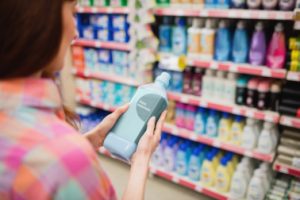Inner Insight
Chemical Ingredients To Avoid
“It’s impossible to avoid every single synthetic chemical, but you can do your part by limiting the amount of toxins the body is exposed to” (Cunningham, 2014)
New York-based Nutritionist and Wellness Expert, source from huffpost.com.
by Naya Aayat
There are thousands of chemicals in the products that you may be using. These chemicals, unknown to you, are absorbed into the body. “It's impossible to avoid every single synthetic chemical, but you can do your part by limiting the amount of toxins the body is exposed to” (Cunningham, 2014), a New York-based Nutritionist and Wellness Expert educating people on harmful toxic ingredients published on huffpost.com.
Most of us have come across some of these harmful chemicals in our lives. The three most potent ones are parabens, fragrance, and triclosan. Do we ever wonder what these chemicals do to us? The skin is a vital organ of the human body and it protects us from adverse environmental effects, secures the exchange of certain gases, and excretes a variety of toxins. This is the reason why our skin is a mirror of our health. Although the skin can prevent the entry of many substances into the body, various body care products and cosmetics contain chemicals that are able to penetrate through the skin and enter the bloodstream or lymphatic system, and cause all kinds of health issues.
Consumers always have the misconception that chemicals are not as harmful as they claim to be.
For as long as the negative effects are not seen or felt, they continue to use it. It is critical not to be fooled by certain brands that claim that they are safe to use. On the other hand, some consumers affirm that they have been using certain body products for years and that they are free from any side effects. They could be simply ignorant about the adverse effects of toxins which sometimes takes years to surface in the system.
Let’s first understand why these toxic ingredients are best avoided at any cost. Parabens, for example, have been widely used in products to prevent bacteria growth and commonly used as preservatives in lotions, deodorants (antiperspirant), body scrubs, body wash, shampoo, toothpaste, moisturizers, shaving gels, and cosmetics. In cosmetics, parabens can be identified with Methylparaben (E218), Ethylparaben (E214), Propylparaben (E216), Butylparaben and Heptylparaben. Isobutylparaben, benzylparaben, isopropylparaben, and their sodium salts are the less common parabens.
Some of the adverse effects of Parabens are skin irritations and accelerated ageing of skin. Studies indicate that methylparaben applied on the skin may react with UVB (Ultraviolet B-rays) leading to increased skin ageing, skin cancer, and DNA damage. Numerous studies have shown the presence of parabens in breast tumors, and parabens might promote the spread of cancer. Most cosmetic and beauty care companies do not want you to know this.

Another key toxic ingredient is fragrance, which is also known as parfum. It was created to provide a pleasant scent or mostly to mask unpleasant odors. The question we should ask ourselves is what we are trying to hide. Unknowingly, we are applying a mixture of ingredients that contain tons of chemicals that are hazardous to our health.
Fragrance also has a strong negative effect on the reproductive system and has been associated with allergies, headaches, respiratory distress, loss of coordination and neurotoxic symptoms that affect the cognitive function, loss of memory or vision, and numbness in the limbs. Many of its ingredients are respiratory irritants and sensitizers, which can trigger asthma attacks and aggravate sinus conditions and cancer. Most companies still use synthetic scents despite the detrimental effects on health as they are driven by the lucrative revenues of the business.
The European Union along with some other countries have already banned the use of almost 1300 ingredients in cosmetics. However, the U.S. has only banned 30 so far. This can be quite confusing for a consumer who lacks awareness and knowledge about the potential harm of toxins in everyday products. We should make an effort to educate ourselves and our loved ones to read labels, research the ingredients and never to fall prey for brands, or advertisements that falsely promote their products for the sake of making money.

Triclosan is another harmful ingredient found in deodorant, mouthwash, body wash, hand soap, tooth whitening, and detergents. Its function is to create antibacterial resistance and act as a synthetic antibacterial compound that is known as endocrine and muscle function disruptor. Nevertheless, it has been found that triclosan increases the risk of infertility and hormone-related issues.
